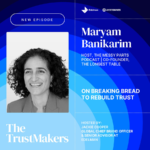By Omri Argaman, CMO/CGO, Zoomd
Among Gen Z, what’s the most popular sport to watch after football (28%) and Basketball (13%)?
If you guessed baseball, guess again.
According to data from Gallup, soccer is the third favorite sport to watch (8%), ahead of fourth-ranked baseball (5%).
With the FIFA World Cup of soccer returning to North America in June and July 2026, for the first time since 1994, now is the time for marketers to understand the opportunity and set their sponsorship plans.
For the most recent FIFA World Cup, held in Qatar in November and December 2022, TV ratings on Fox Sports increased by 30% from the previous World Cup held in Russia in 2018. Despite Soccer’s popularity in Europe, and Qatar being only a four-to-seven-hour flight, the country whose citizens bought the most tickets was the US, with 147,000 tickets purchased.
Branding in the Sports Marketing Desert
American sports activity peaks between November and April, when most sports leagues are in action. June and July are known as the ‘sports desert’, with only 40% and 42% of the sports activity level of March (100%). The limited sports broadcast during June and July, namely a few NBA Championship games as well as tennis, golf, and NASCAR, means that the FIFA World Cup will provide advertisers with a summer sports marketing opportunity.
According to data from youth sports technology provider iSport 360, with three million registered youth players nationally, soccer is the most popular sport among the youth, ahead of basketball (2.6 million players), baseball (2.5 million players), and football (1.5 million players).
While the aforementioned number of youth soccer players might have prompted the term ‘Soccer Mom’, in reality, female soccer fans are more than just mothers. Among soccer fans aged 16-24, 24% are female vs. 14% male, while among fans 25-34, 29% are female vs. 24% male. Soccer fans older than 44 skew more heavily male.
Research from Nielsen Sports found that 22% of soccer fans in the US are Hispanic. This means that some World Cup-focused marketing should be in Spanish, but that the actual market of soccer fans, like the US as a whole, is diverse.
TV, Social Media, and Jersey Sponsorship Lead
According to research from consultancy For Soccer’s ‘American Fan Insights’ report from November 2024, TV (68%) and Social Media (65%) were the preferred channels for reaching soccer fans. Websites, the 3rd most effective channel, were preferred by only 43% of respondents, followed by Apps (36%), and billboards (32%).
Given the preference for TV and social media, marketers should consider planning campaigns on TV and CTV that are supported with social media. Creating a campaign around the World Cup ‘clip of the day’, highlighting a particular goal or another unique play, will enable a marketer to tap into and benefit from the excitement of the tournament.
When For Soccer asked respondents which sponsorship they typically noticed while watching soccer on TV/streaming, Uniform/Jersey Sponsors (56%) was the top-ranked response, followed by Sports Equipment (48%), In-Stadium Signage (46%), Broadcast Graphics (42%), Stadium Naming Rights (34%) and Interview Backdrops (30%).
Understanding soccer fans’ media and sponsorship preferences will make sponsoring this summer’s World Cup more successful for marketers.
Go Local
Games for the 2026 FIFA World Cup will be held in the US, Canada, and Mexico, though the majority of games will be played in 11 US media markets. The selection of the US host cities coincides with the markets with the greatest enthusiasm for the World Cup. Seven of the 10 media markets, in ranked order, will host World Cup matches, including Miami, New York City, Los Angeles, San Francisco, Dallas, Houston, and Boston. The other cities hosting World Cup matches are Seattle, Kansas City, Philadelphia, and Atlanta, all ranked 11-25 for interest in the World Cup.
Creating marketing opportunities around local World Cup matches provides marketers with an opportunity to tap into the excitement of the tournament, even for those without a national budget or presence. For example, Coca-Cola, a FIFA World Cup sponsor, has run pricing and other promotions around the World Cup and other sporting events. Furthermore, marketers can take advantage of the summer weather for outdoor events and sampling.
With Ted Lasso scheduled to return for the long-awaited season four in March 2026, three months before the start of the World Cup, Americans will be ready for soccer. Given the growth of soccer as a sport that Americans are increasingly playing and watching, coupled with the local and summer sports marketing opportunities, marketers should be evaluating how they can score next summer with the FIFA World Cup.











